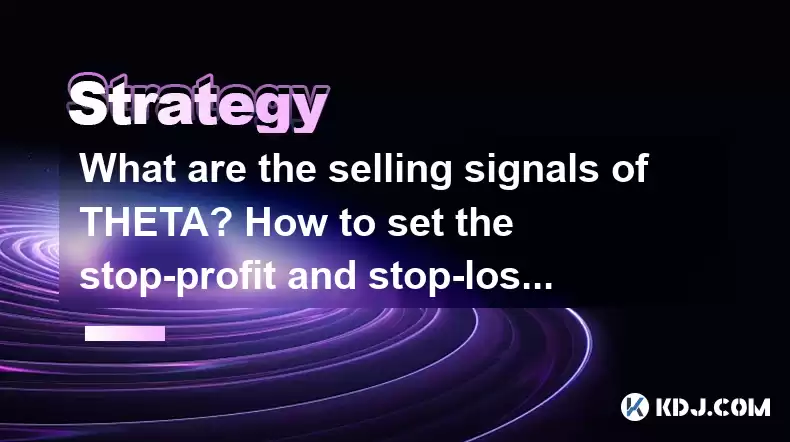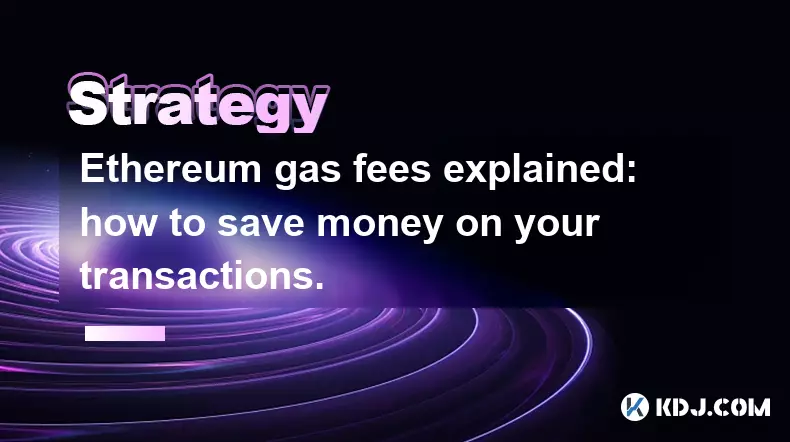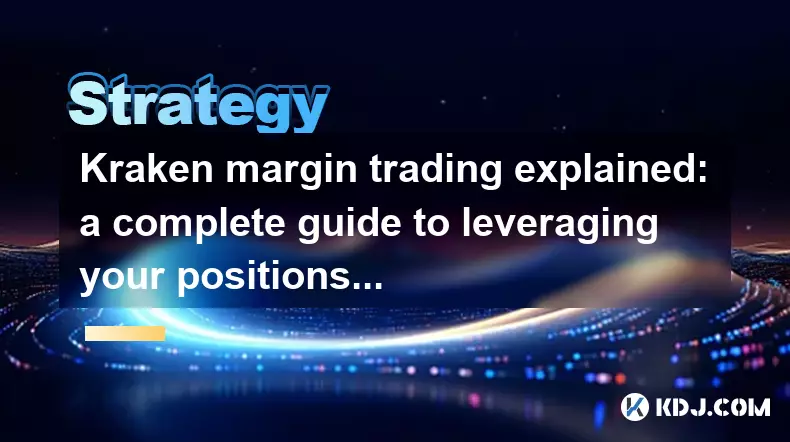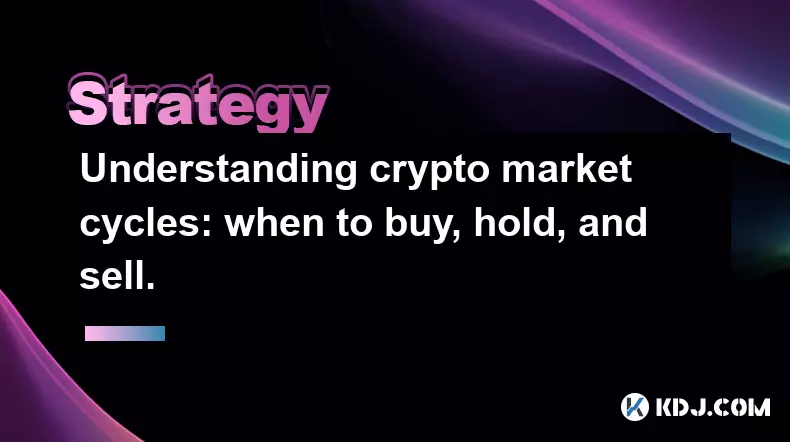-
 bitcoin
bitcoin $107015.826941 USD
-2.18% -
 ethereum
ethereum $3637.352324 USD
-5.18% -
 tether
tether $0.999831 USD
-0.02% -
 xrp
xrp $2.338078 USD
-6.23% -
 bnb
bnb $998.272150 USD
-6.97% -
 solana
solana $167.598257 USD
-10.12% -
 usd-coin
usd-coin $0.999863 USD
0.01% -
 tron
tron $0.282573 USD
-5.09% -
 dogecoin
dogecoin $0.169891 USD
-7.39% -
 cardano
cardano $0.557554 USD
-7.03% -
 hyperliquid
hyperliquid $39.914802 USD
-5.85% -
 chainlink
chainlink $15.414549 USD
-9.97% -
 bitcoin-cash
bitcoin-cash $510.361911 USD
-4.26% -
 ethena-usde
ethena-usde $0.999194 USD
-0.03% -
 stellar
stellar $0.282092 USD
-6.07%
What are the selling signals of THETA? How to set the stop-profit and stop-loss more reasonably?
THETA's market dynamics are influenced by tech developments, sentiment, and economic trends; watch for technical indicators and volume changes as selling signals.
May 07, 2025 at 11:35 am

Understanding THETA and Its Market Dynamics
THETA is a blockchain-powered network designed specifically for video streaming. It aims to improve the efficiency and reduce the costs of video delivery through a decentralized system. As with any cryptocurrency, understanding the selling signals of THETA is crucial for investors looking to maximize their returns and minimize their risks. The market dynamics of THETA are influenced by various factors, including technological developments, market sentiment, and broader economic trends.
Identifying Selling Signals for THETA
Selling signals are indicators that suggest it might be a good time to sell your THETA holdings. These signals can be technical, fundamental, or a combination of both. Here are some key selling signals to watch for:
Technical Indicators: These include moving averages, Relative Strength Index (RSI), and Bollinger Bands. For instance, if the THETA price crosses below its 50-day moving average, it might be a signal to sell. Similarly, an RSI reading above 70 could indicate that THETA is overbought, suggesting a potential price correction.
Volume Analysis: A sudden spike in trading volume, especially when accompanied by a price drop, can be a strong selling signal. High volume often indicates that large investors are selling, which could lead to further price declines.
Fundamental Changes: News about the THETA network, such as delays in project milestones or regulatory challenges, can negatively impact the price. Keeping an eye on the project's roadmap and any announcements from the THETA team is essential.
Market Sentiment: Social media sentiment and news articles can significantly influence THETA's price. A shift from positive to negative sentiment can be a precursor to a price drop, signaling a potential sell-off.
Setting Stop-Profit and Stop-Loss for THETA
Setting stop-profit and stop-loss orders is a critical strategy for managing risk and locking in profits. Here's how to set these orders more reasonably for THETA:
Stop-Profit: This is the price at which you want to sell your THETA to lock in profits. To set a stop-profit, consider the following:
- Determine your profit target: Based on your investment goals and market analysis, decide how much profit you want to achieve.
- Set the stop-profit level: If you bought THETA at $5 and your target profit is 20%, you would set your stop-profit at $6.
Stop-Loss: This is the price at which you want to sell your THETA to limit your losses. To set a stop-loss, consider the following:
- Assess your risk tolerance: Decide how much loss you are willing to accept.
- Set the stop-loss level: If you bought THETA at $5 and are willing to risk a 10% loss, you would set your stop-loss at $4.50.
Implementing Stop-Profit and Stop-Loss Orders for THETA
To implement stop-profit and stop-loss orders for THETA, follow these steps:
Choose a Trading Platform: Select a reputable cryptocurrency exchange that supports THETA trading and offers stop orders.
Log into Your Account: Access your trading account on the chosen platform.
Navigate to the THETA Trading Page: Find the trading pair that includes THETA (e.g., THETA/USDT).
Set the Stop-Profit Order:
- Click on the 'Sell' tab.
- Select 'Stop-Limit' or 'Stop-Market' order type.
- Enter the stop price (e.g., $6 for a 20% profit target).
- Enter the limit price (if using a stop-limit order, e.g., $5.95 to ensure execution).
- Enter the amount of THETA to sell.
- Review and confirm the order.
Set the Stop-Loss Order:
- Click on the 'Sell' tab.
- Select 'Stop-Limit' or 'Stop-Market' order type.
- Enter the stop price (e.g., $4.50 for a 10% loss limit).
- Enter the limit price (if using a stop-limit order, e.g., $4.45 to ensure execution).
- Enter the amount of THETA to sell.
- Review and confirm the order.
Monitoring and Adjusting Your Orders
Once your stop-profit and stop-loss orders are set, it's important to monitor the market and adjust your orders as necessary. Here's how to do it effectively:
Regularly Check Market Conditions: Keep an eye on THETA's price movements, news, and market sentiment.
Adjust Stop-Profit and Stop-Loss Levels: If THETA's price moves significantly, you may want to adjust your stop-profit and stop-loss levels to lock in more profits or reduce potential losses.
Use Trailing Stops: Consider using trailing stop orders, which automatically adjust the stop price as the market price moves in your favor. This can help maximize profits while still protecting against significant losses.
Frequently Asked Questions
Q: How does the overall market sentiment affect THETA's price?A: Market sentiment plays a crucial role in the price movements of THETA. Positive sentiment, driven by favorable news or developments within the THETA ecosystem, can lead to increased demand and higher prices. Conversely, negative sentiment, often triggered by regulatory concerns or project delays, can result in decreased demand and lower prices. Monitoring social media, news outlets, and community forums can provide insights into the current sentiment surrounding THETA.
Q: Can technical analysis alone be sufficient for trading THETA?A: While technical analysis is a powerful tool for predicting price movements, relying solely on it may not be sufficient for trading THETA. Technical analysis should be complemented with fundamental analysis, which involves assessing the project's development progress, partnerships, and overall market conditions. A combination of both approaches can provide a more comprehensive view of THETA's potential price movements.
Q: What are some common mistakes to avoid when setting stop-profit and stop-loss orders for THETA?A: Common mistakes include setting stop-profit and stop-loss levels too tightly, which can result in premature selling due to normal market fluctuations. Another mistake is not adjusting these levels as the market evolves, potentially missing out on further gains or failing to protect against larger losses. Additionally, not considering the overall market volatility and liquidity can lead to orders not being executed as intended. It's crucial to set realistic levels and regularly review and adjust them based on current market conditions.
Q: How can I stay updated on THETA's project developments to better inform my trading decisions?A: Staying updated on THETA's project developments involves regularly checking the official THETA website, following their social media channels, and subscribing to their newsletter. Additionally, joining THETA-focused communities on platforms like Reddit and Discord can provide real-time insights and discussions about the project's progress. Keeping an eye on cryptocurrency news outlets and analysis websites can also help you stay informed about any significant updates or announcements related to THETA.
Disclaimer:info@kdj.com
The information provided is not trading advice. kdj.com does not assume any responsibility for any investments made based on the information provided in this article. Cryptocurrencies are highly volatile and it is highly recommended that you invest with caution after thorough research!
If you believe that the content used on this website infringes your copyright, please contact us immediately (info@kdj.com) and we will delete it promptly.
- MEXC, USDf, and Trading Volume: A Deep Dive into Recent Developments
- 2025-11-04 19:15:01
- Bitcoin, Crypto, and EcoYield Bonus: Is This the Smartest Play Now?
- 2025-11-04 19:15:12
- Cardano (ADA) and Altcoin Growth: Navigating the Landscape
- 2025-11-04 19:15:12
- XRP ETF Buzz: Is a Price Surge on the Horizon?
- 2025-11-04 19:20:01
- Binance, Stablecoins, and Liquidity: Decoding the Crypto Market's Next Move
- 2025-11-04 19:30:01
- Milk Mocha's $HUGS: The Presale Meme Coin Redefining Community and Value
- 2025-11-04 17:50:02
Related knowledge

Ethereum gas fees explained: how to save money on your transactions.
Nov 04,2025 at 04:01pm
Ethereum Gas Fees: Understanding the Basics1. Ethereum operates on a decentralized network where every transaction requires computational power to exe...

Kraken margin trading explained: a complete guide to leveraging your positions.
Nov 04,2025 at 02:19pm
Kraken Margin Trading Overview1. Kraken is one of the most established cryptocurrency exchanges offering margin trading to experienced traders seeking...

NFT flipping for beginners: a step-by-step guide to profitable trading.
Nov 02,2025 at 11:54pm
NFT Flipping Basics: Understanding the Market1. NFT flipping involves purchasing non-fungible tokens at a lower price and reselling them for profit, o...

How to find the next 100x altcoin: a fundamental analysis checklist.
Nov 02,2025 at 09:54pm
Decentralized Exchanges Are Reshaping Trading Dynamics1. Decentralized exchanges (DEXs) have emerged as a powerful alternative to centralized platform...

Understanding crypto market cycles: when to buy, hold, and sell.
Nov 02,2025 at 11:19am
Decoding the Rhythm of Crypto Market Cycles1. The cryptocurrency market operates in recurring phases marked by predictable psychological and financial...

Beginner's guide to crypto staking: earn passive income on your holdings.
Nov 03,2025 at 05:36pm
What Is Crypto Staking?1. Crypto staking involves locking up a certain amount of cryptocurrency in a blockchain network to support operations like tra...

Ethereum gas fees explained: how to save money on your transactions.
Nov 04,2025 at 04:01pm
Ethereum Gas Fees: Understanding the Basics1. Ethereum operates on a decentralized network where every transaction requires computational power to exe...

Kraken margin trading explained: a complete guide to leveraging your positions.
Nov 04,2025 at 02:19pm
Kraken Margin Trading Overview1. Kraken is one of the most established cryptocurrency exchanges offering margin trading to experienced traders seeking...

NFT flipping for beginners: a step-by-step guide to profitable trading.
Nov 02,2025 at 11:54pm
NFT Flipping Basics: Understanding the Market1. NFT flipping involves purchasing non-fungible tokens at a lower price and reselling them for profit, o...

How to find the next 100x altcoin: a fundamental analysis checklist.
Nov 02,2025 at 09:54pm
Decentralized Exchanges Are Reshaping Trading Dynamics1. Decentralized exchanges (DEXs) have emerged as a powerful alternative to centralized platform...

Understanding crypto market cycles: when to buy, hold, and sell.
Nov 02,2025 at 11:19am
Decoding the Rhythm of Crypto Market Cycles1. The cryptocurrency market operates in recurring phases marked by predictable psychological and financial...

Beginner's guide to crypto staking: earn passive income on your holdings.
Nov 03,2025 at 05:36pm
What Is Crypto Staking?1. Crypto staking involves locking up a certain amount of cryptocurrency in a blockchain network to support operations like tra...
See all articles










































































